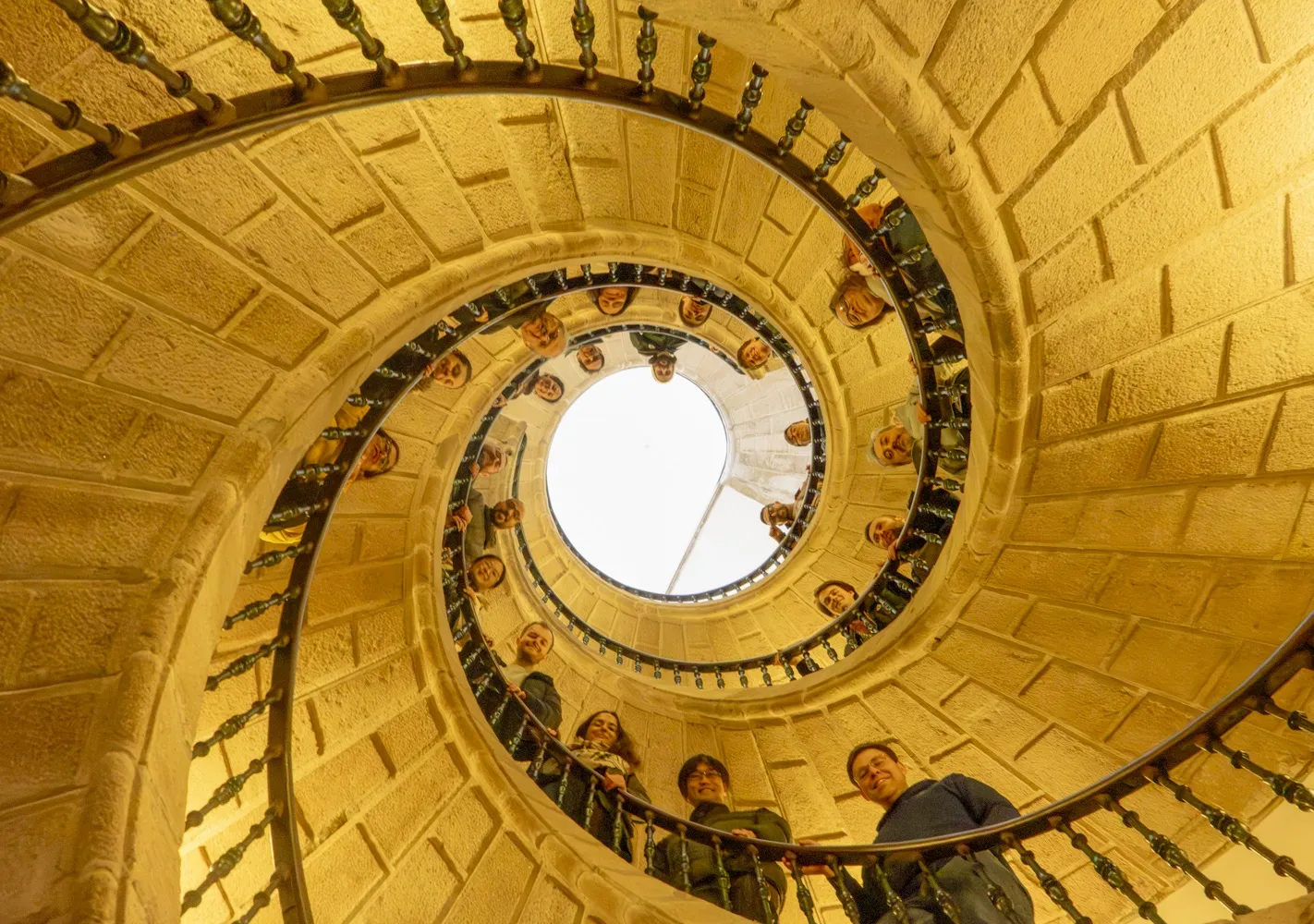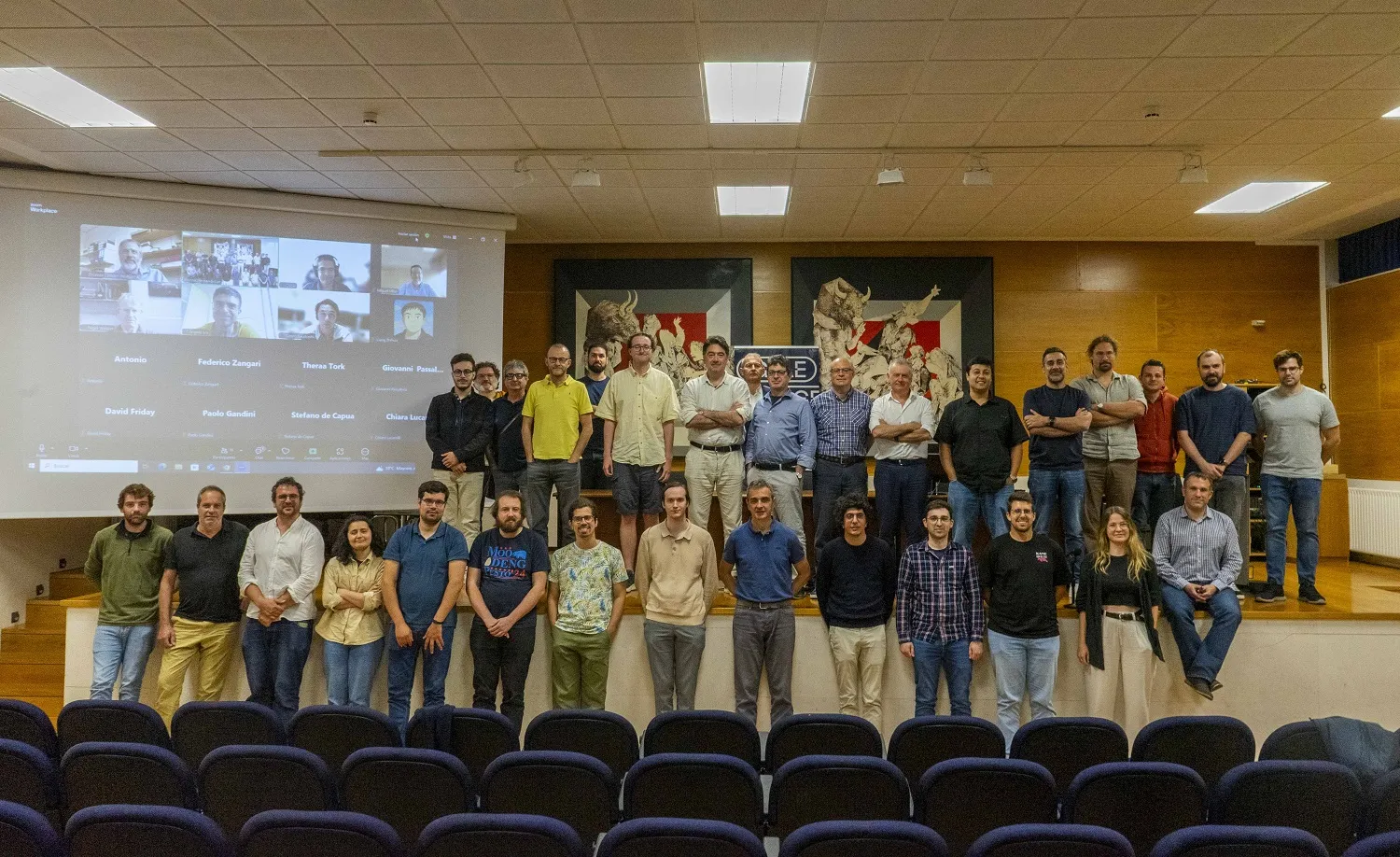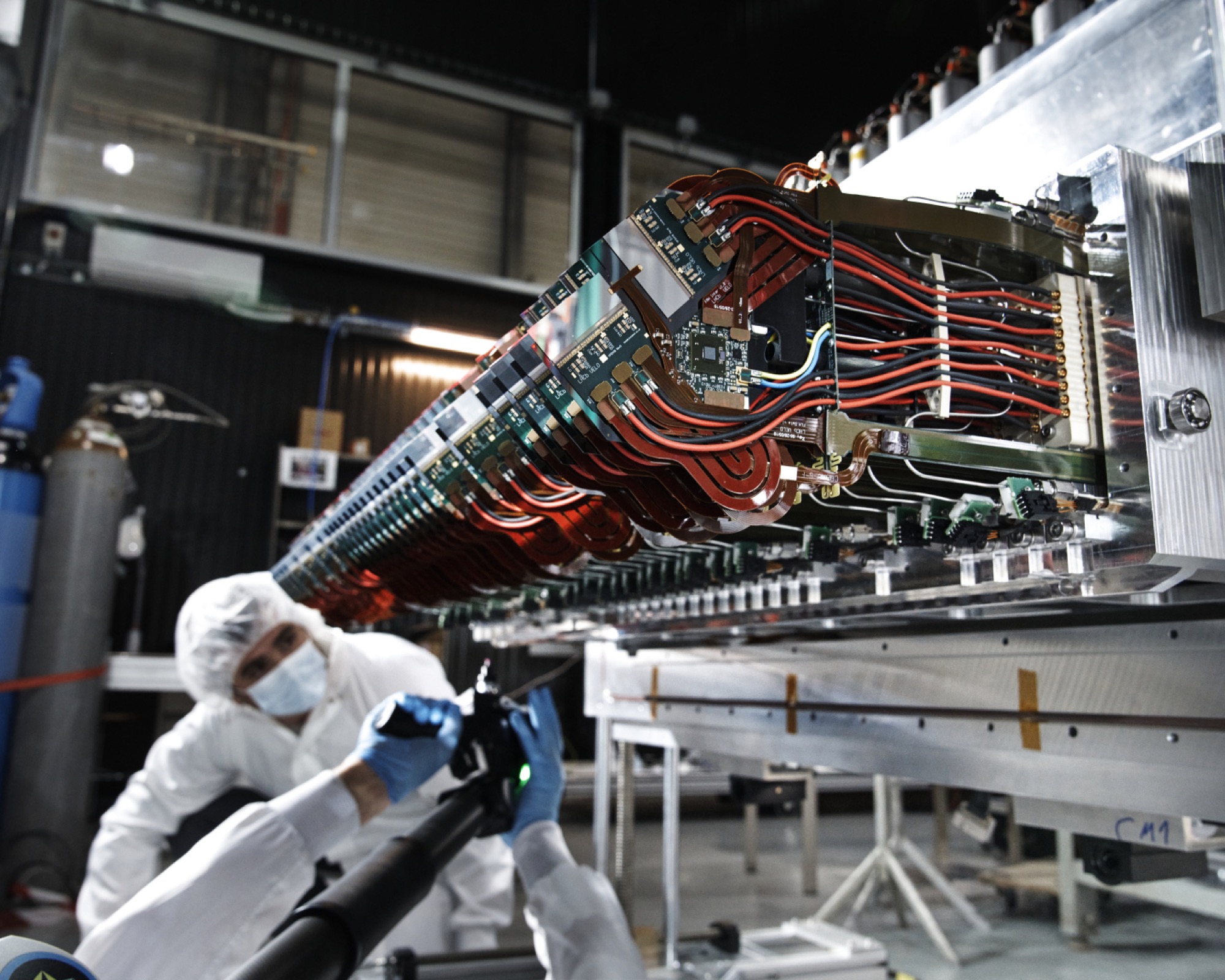IGFAE hosts an international meeting on the development of solenoidal spectrometers



12.06.2025

From June 11 to 13, more than 40 researchers are gathering at the Faculty of Political Sciences of the University of Santiago de Compostela (USC) to design the Upgrade II of the Vertex Locator (VELO) for the LHCb experiment, one of CERN’s major scientific collaborations.
The event, organized by IGFAE, includes participation from experts at CERN itself, the Nikhef Institute for Subatomic Physics in Amsterdam, and universities such as Oxford, Milan, Cagliari, Birmingham, Liverpool, Manchester, Frascati, Warwick, and Rio de Janeiro, as well as the National Center for Microelectronics (CNM-CSIC) and other institutions.
The sessions focus on the development of the new VELO, addressing the R&D and innovation required in silicon sensors, chip design, mechanics, cooling systems, and detector electronics, with the goal of establishing a work schedule and outlining the key technological decisions to be made in the coming years.
The LHCb experiment studies the asymmetry between matter and antimatter through the b (beauty) quark. It is part of the Large Hadron Collider (LHC), located on the French-Swiss border beneath CERN’s headquarters, and involves around 1,800 people from over 100 institutions in 24 countries.
IGFAE is a founding member of LHCb and the Spanish research center most involved in the project, having led key tasks such as the construction of the Silicon Tracker, the VELO, data analysis, and the upcoming Upgrade II of the experiment.
The VELO detector measures with high precision the primary vertices (proton collisions) and secondary vertices (decays of particles like B hadrons, which contain b quarks). Since these particles have extremely short lifetimes, VELO places its silicon sensors just 5 mm from the beam. To avoid damage, the sensors are kept retracted during beam injection and are moved closer once the beam is stable. Although B hadrons are not detected directly, their presence can be inferred with a precision of under 10 microns, thanks to technological advances developed by teams such as IGFAE’s.
The IGFAE has been accredited as a María de Maeztu Unit of Excellence by the Spanish Government’s State Research Agency. It is also part of the CIGUS network of the Regional Government of Galicia, which recognises the quality and impact of its research. The center is co-financed by the European Union through the Galicia Feder 2021-2027 Program.
